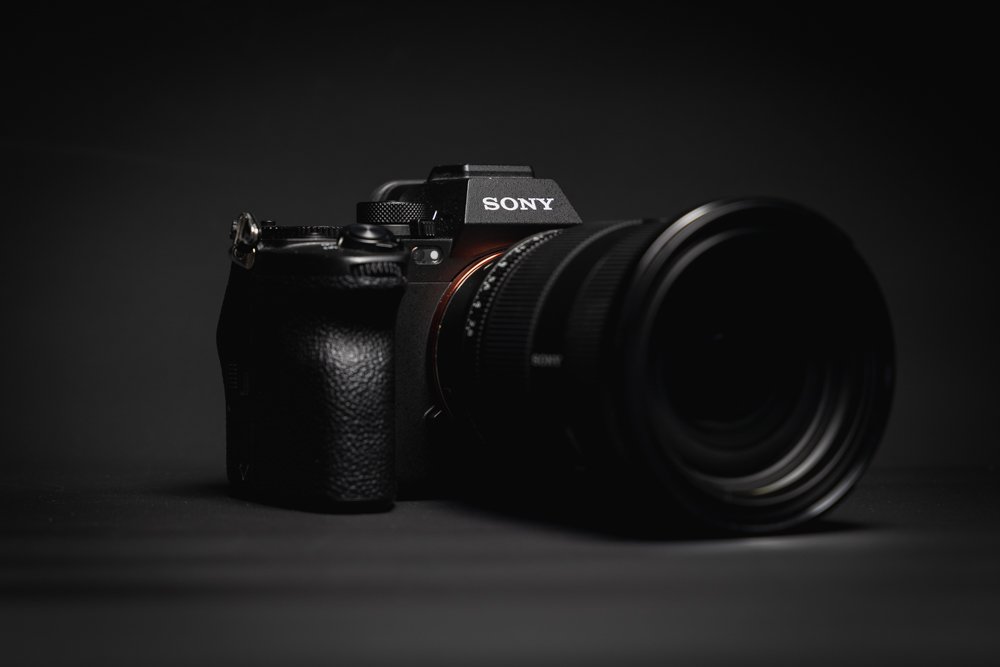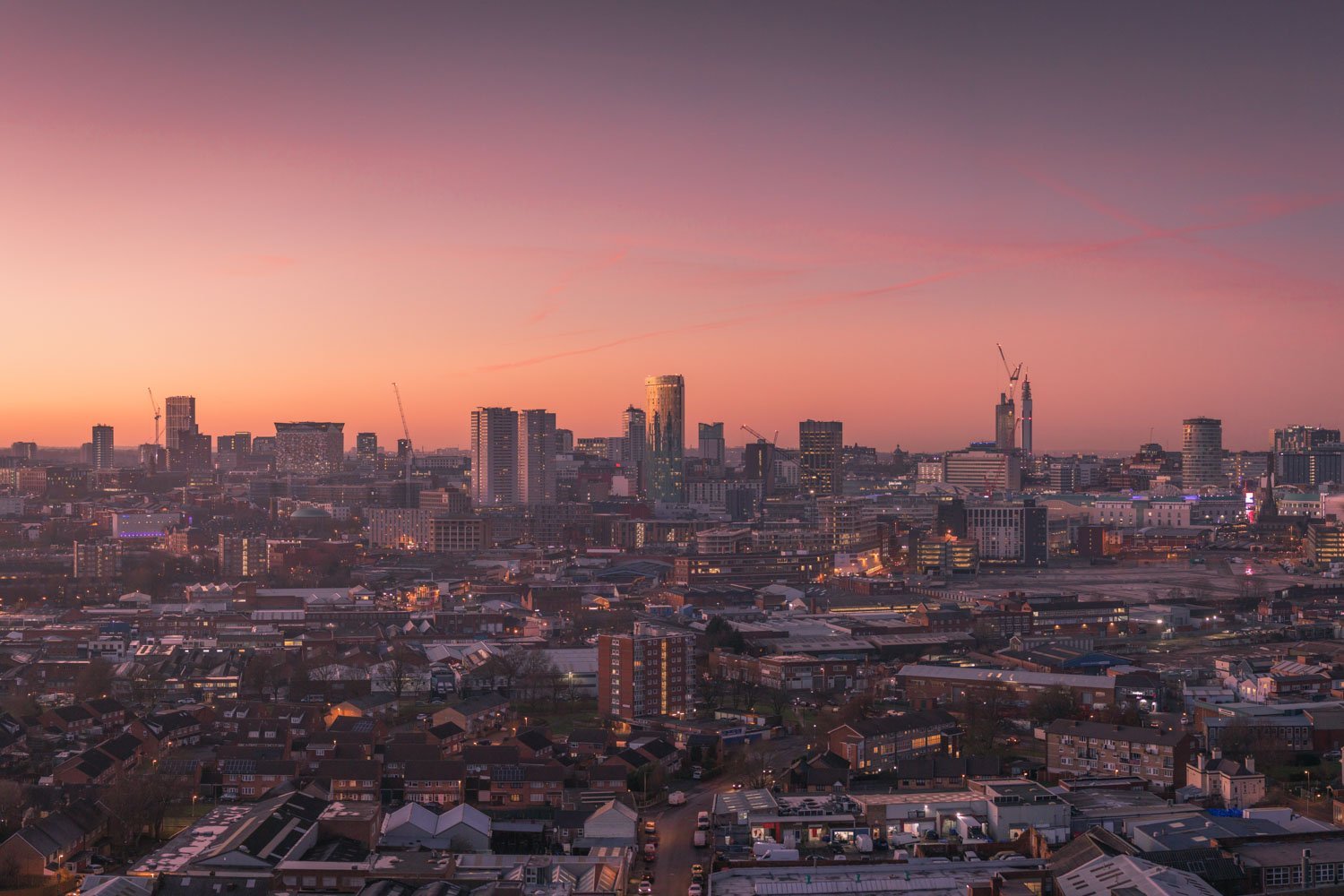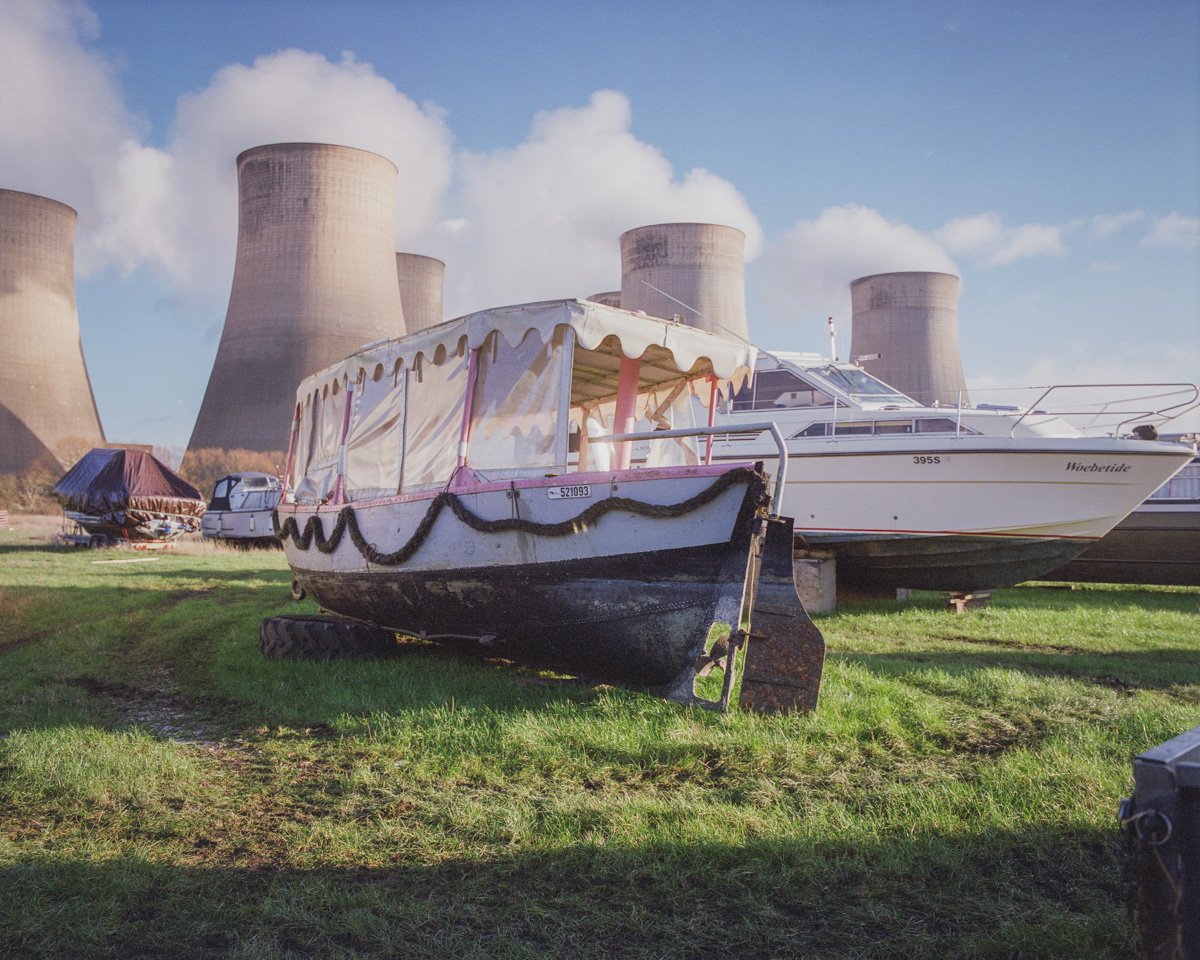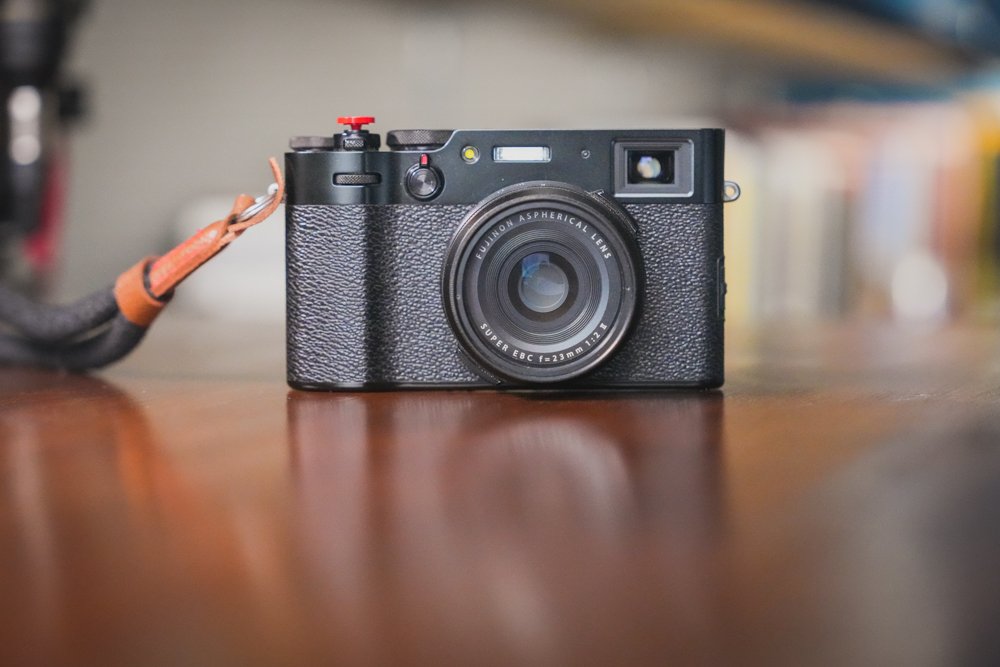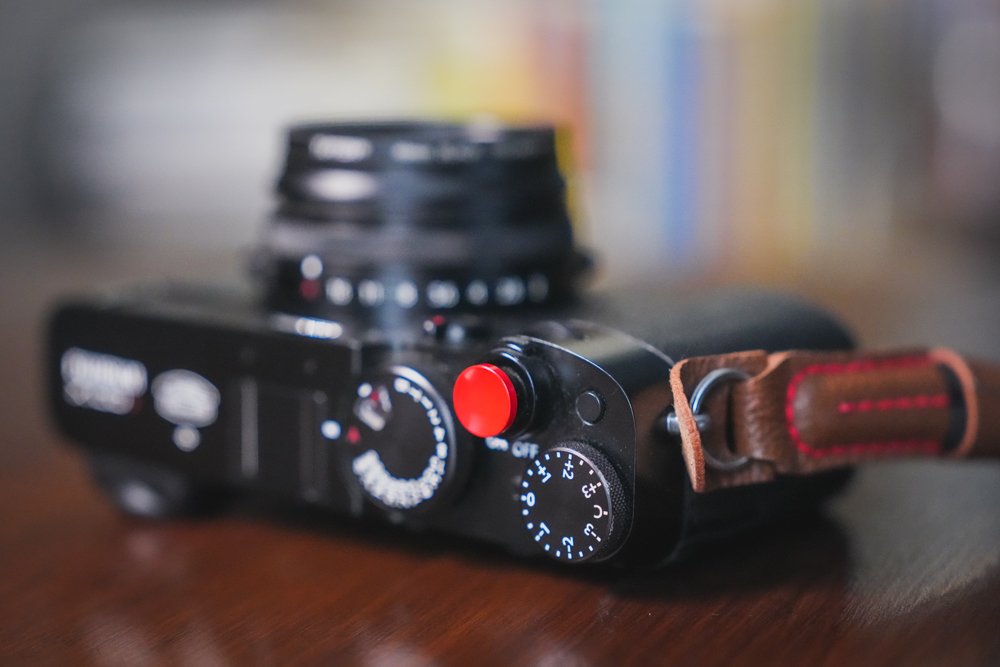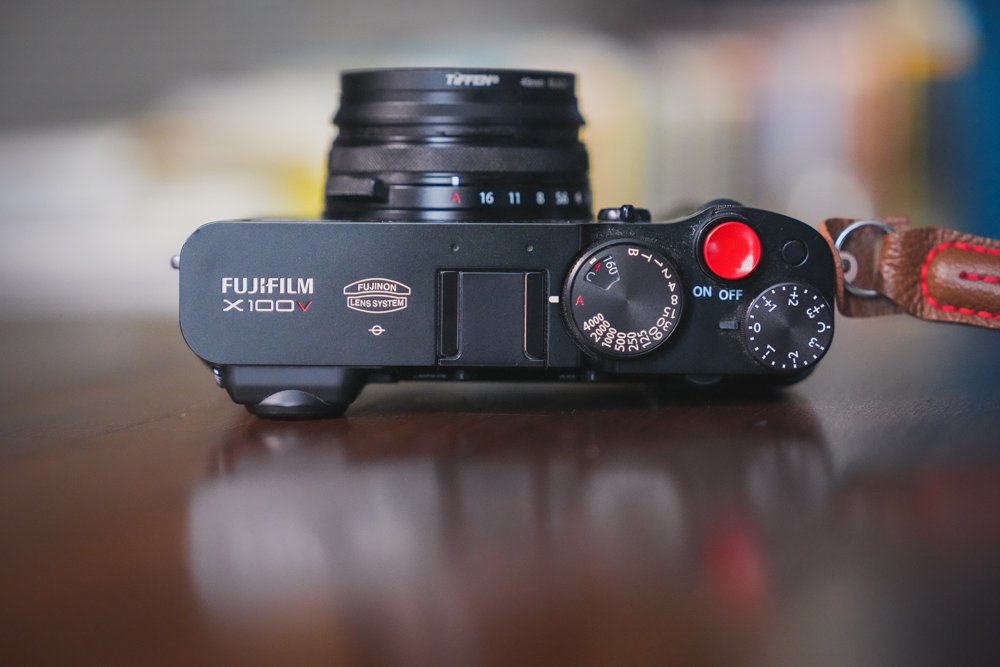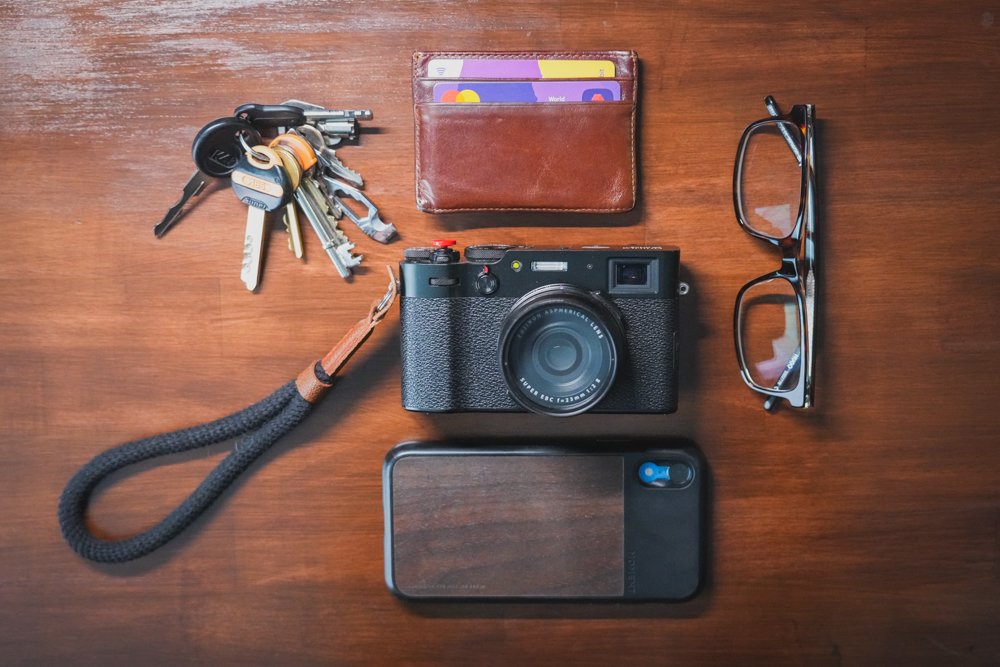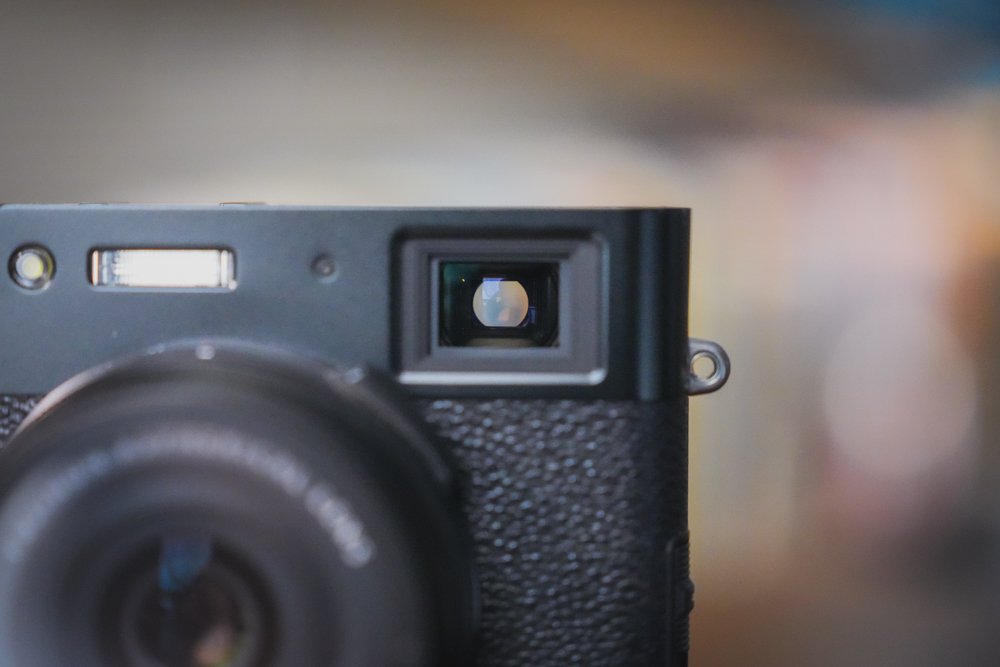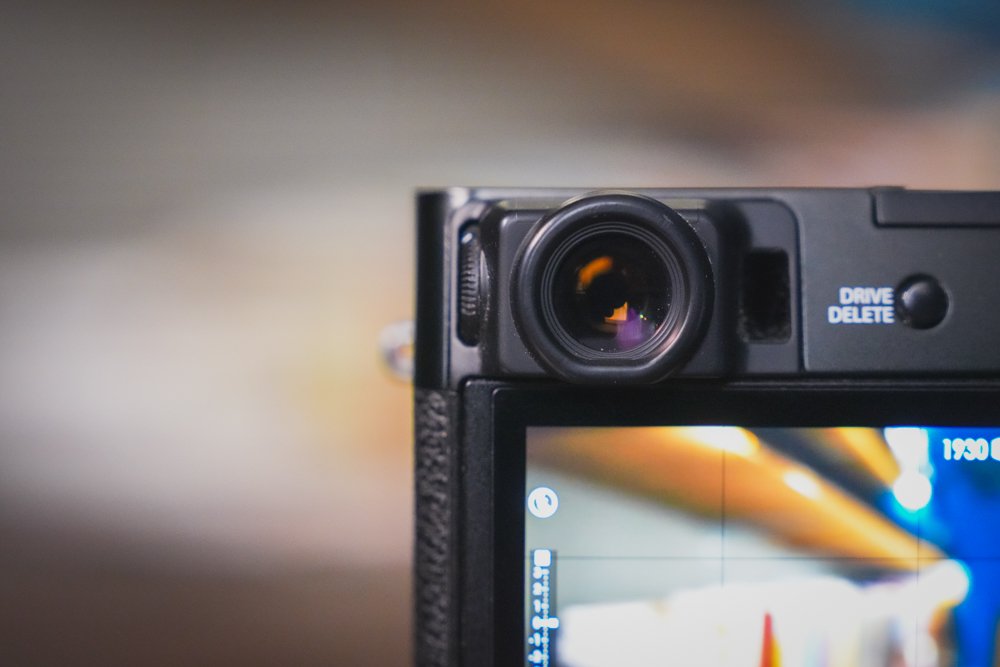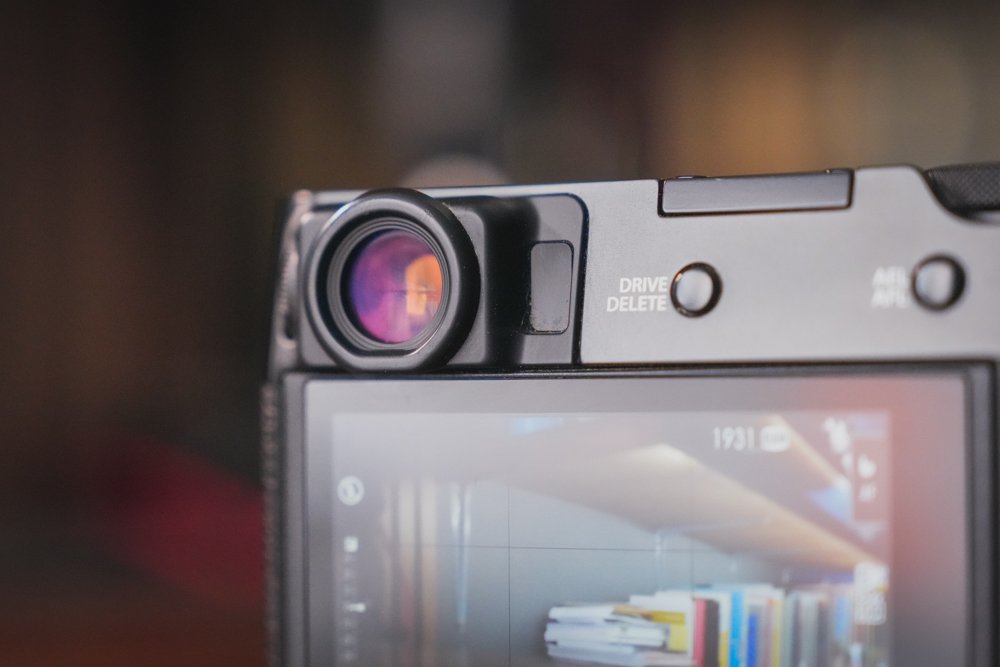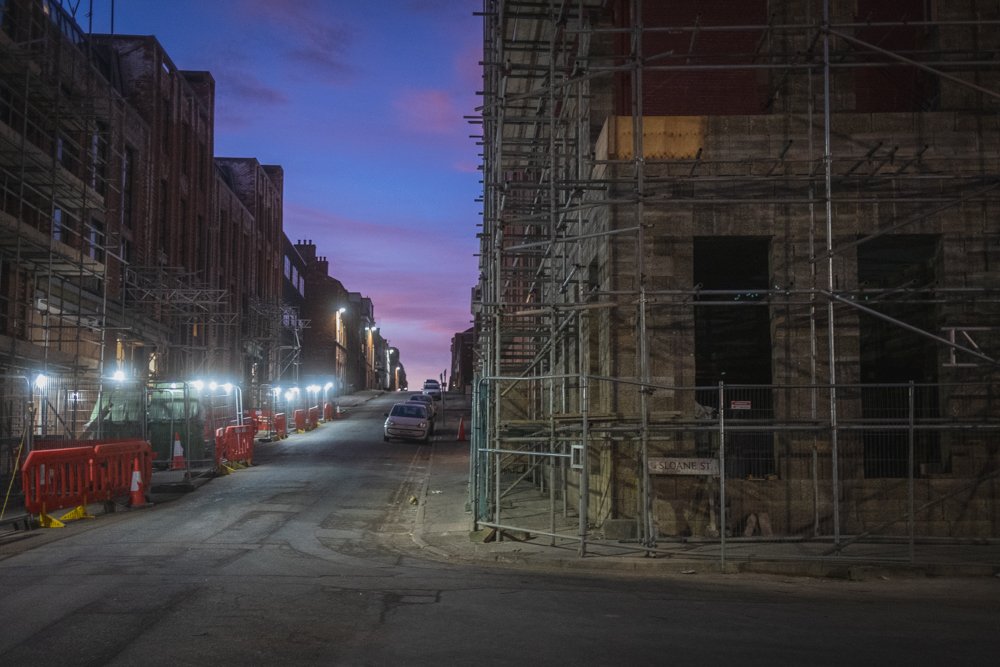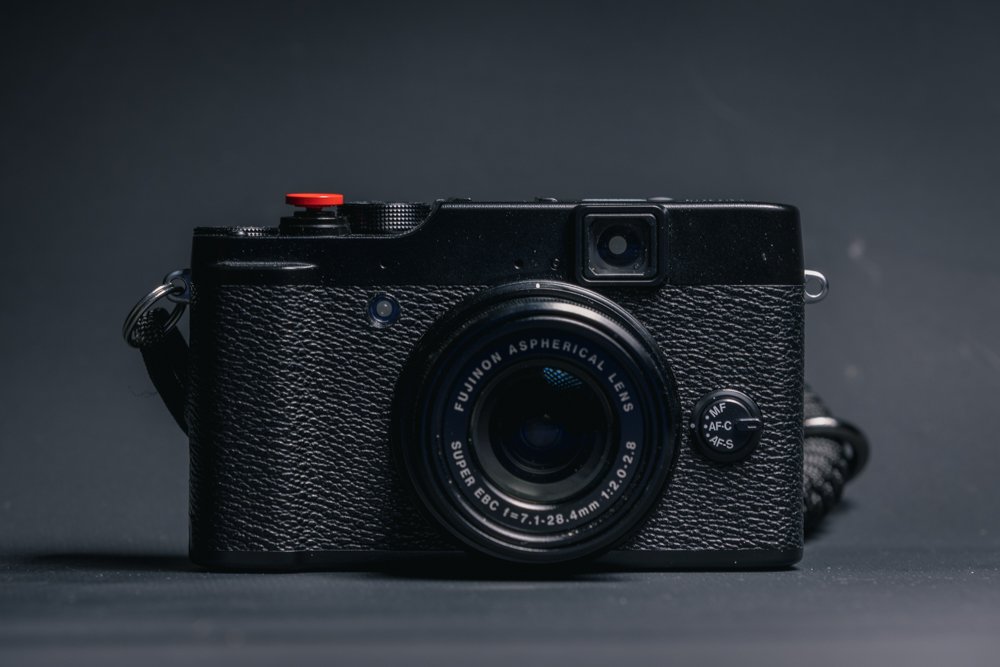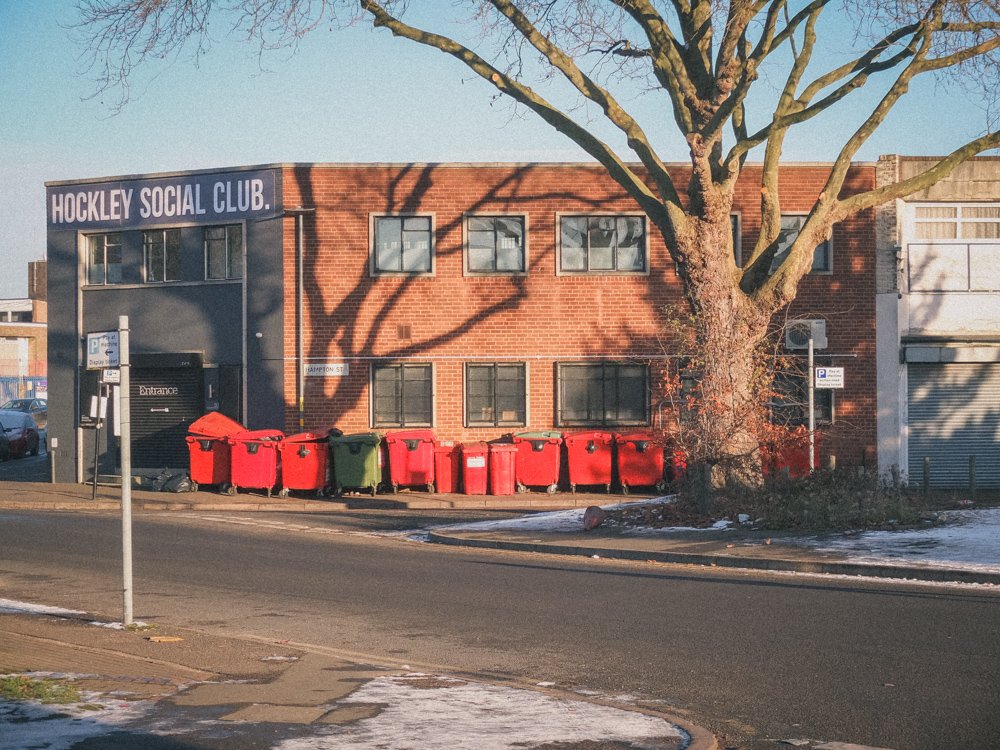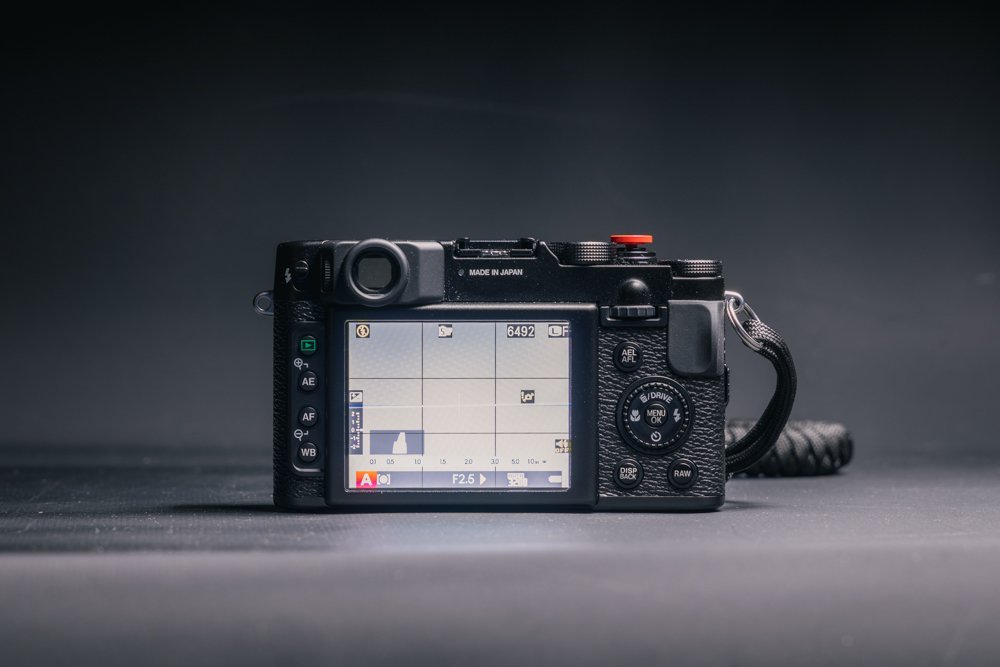My Top 10 Cameras of 2023!
I carry a camera everywhere, whether I am walking to the shops or on a day trip out to some new location, I generally have some kind of camera on me. After I posted my favourite cameras of 2022, I received lots of emails asking details about some of the cameras I listed and it was apparent that plenty of the readers were intrigued by what did and didn’t make the list, so I thought I would give you an insight into some of my favourite cameras that I have used in 2023.
my favourite cameras in 2023
I carry a camera everywhere, whether I am walking to the shops or on a day trip out to some new location, I generally have some kind of camera on me. After I posted my favourite cameras of 2022, I received lots of emails asking details about some of the cameras I listed and it was apparent that plenty of the readers were intrigued by what did and didn’t make the list, so I thought I would give you an insight into some of my favourite cameras that I have used in 2023.
It’s fair to say that I am very fortunate to get to use a lot of different cameras and I appreciate how lucky I am to do so. The vast majority of these cameras are purchased with my own money (I will have a post coming up in the New Year about my process for buying and selling cameras!) but some are loaned to me from camera manufacturers. However, this does not cloud my judgement, I will always give an honest opinion and never feel pressured into saying something I don’t believe to be true.
The only other thing worth keeping in mind as we run down the list is that some of these cameras are there to do a job and some purely for pleasure - that’s not to say that one is better than the other and you should run out and buy it! This list is purely from my own perspective and I will be explicit over whether it is a practical choice or simply something that puts a smile on my face!
PLEASE NOTE: I PURCHASED MOST OF THESE ITEMS WITH MY OWN MOMEY AND NO PAYMENT OR CONTROL WAS EXCHANGED FOR PUBLISHING THIS UNBIASED REVIEW
10 - Fuji X10
I picked this camera up in 2022 as a viable alternative to the X100V and as I mentioned in my review, I feel like it gets most of the way there. The small form factor is everything the X100V should be but I’m not going to sugar coat it, the image quality is never going to be as good as its more modern relative.
With patience, you can really get the most out of the X10
That said, it’s still more than possible to get a great image out of this camera and with a bit of patience and understanding, the files can be wrangled into something more than usable. I didn’t find myself using this camera as much as I hoped this year but every time I see it, it puts a smile on my face and I sincerely hope Fuji makes a return to this pocket friendly form factor when they release the latest iteration in their X-series line-up.
9 - Sony A7RV
OK, before anybody calls me a troll or accuses me of losing my mind, let me explain why Sony is so far down the list! It is a stellar camera, arguably the best camera on the list from a technical point of view. It has the best autofocus, a seriously impressive sensor, decent handling and video functions that wouldn’t be out of place on a Hollywood movie set.
It doesn’t take much to get the most out of the A7RV files :)
Therein lies the problem though, it's a technical masterpiece and for me at least, it feels a little too clinical. The image quality is sharp and precise, the autofocus is snappy and fast - but it lacks that ‘something’ that makes me want to pick the camera up. I know how ridiculous it sounds to prefer a ‘worse’ camera, but the camera is not just a tool, it needs to inspire you and that’s where I find this camera lacking! That’s jus me though, it really is a camera of the highest quality.
Video Source - DP Review TV via YouTube
8 - Canon EOS-R
I’ve said it before and I’ll say it again, I think the original EOS-R is one of the best bargains in modern cameras. It got hammered when first released and in some parts, with good reason. However, the autofocus is good enough for most normal scenarios, the build quality is good and personally, I find the handling a treat.
The Canon Eos R once again proving why its one of my secret favourites!
Put that together with decent image quality, respectable dynamic range and video quality that, in 1080p at least, is plenty good enough and you have quite a package. Sure, there are much better options out there but for the price and the lens availability, I can’t think of many cameras that I would recommend over it. To coin a phrase from the youngsters, I think way too many people are ‘sleeping on’ the EOS-R!
7 - Yashica Mat 124G
What can I say about this camera, I absolutely adore it. It certainly doesn’t have the grace of a Rolleiflex and not as reliable as a Hasselblad - but it is cheap, easy to use and creates wonderful images. There really isn’t much negative to say about this camera and even if it goes wrong and let’s face it, most old cameras will go wrong! They are still affordable and abundant enough to pick up another one.
The Yashica Mat 1244G is the perfect street companion…
I didn’t get as much opportunity to use it as I may have liked but that is not to say that it isn’t a wonderful camera. In fact, I seriously considered taking this as my ‘only’ film camera to Japan, such is the reliability of it and the simple pleasure of use. However, with rising film prices and developing costs, I’m a little concerned about how much use it will get in the coming year…
6 - Leica M8
Ah the Leica M8, I love this camera. The shooting experience with this camera is incredible and can make even bang average photographers like me feel like Cartier-Bresson! The 10 megapixel CCD sensor is a thing of beauty as long as you feed it lot’s of light! In anything other than bright sunny days, the image can fall apart and in low light it’s almost unusable.
The Leica M8 has some serious nostalgic vibes!
When used in fair conditions though, this little lump of Leica can produce beautifully rich images that almost feel like you are shooting with Kodachrome! The body feels rugged and premium and knowing that it will ‘brass’ over the years, it just makes you want to hold it and use it as often as possible! The only problem being is that as a resident of the uL, sunny days are too few and far between! Hopefully it will get more use in 2024!
5 - Fuji X100V
What can I say about the Fuji X100V that hasn’t already been said a thousand times before. This camera is a marvel of the modern camera world. It’s fantastic to use in almost any scenario and deserves the praise that gets regularly heaped on it. It creates beautiful images and is so simple and enjoyable to use that it’s really difficult to recommend any other cameras over it.
The Fuji X100V is just a great Everyday Carry, for those with big and deep pockets…
However, as I said in my long term review, there is one issue that I struggle to look past from time to time. It’s just a touch too big to call pocket size! If this camera was about 20% smaller, it would be the perfect camera, hands down. You simply can’t easily fit it into a pocket and that means that you have to make a choice - if you need to carry a camera bag, well there are plenty of better cameras to carry. Yes, I understand it’s unfair to pitch it against interchangeable lens cameras or Medium Format! However, if I’m taking a bag out, I’m probably reaching for a different camera.
Video Source - Benj Haisch via YouTube
The 645Z dwarfs the already large Fuji GFX 50S II
4 - Pentax 645Z
OK, so I will be honest. This camera was bought on somewhat of a whim! It’s an outrageously expensive camera to buy without doing some proper research but having sold a few of last year's favourites, I had made up my mind that I wanted to delve into the world of digital Medium Format and this seemed like the most budget friendly way of doing so.
Even with a pro-mist filter in low light, the 645Z produces wonderful images
I will cut to the chase though, this is an incredible camera and I pretty much instantly fell in love with it. So it’s an easy recommendation then? Absolutely not. The camera is huge. I don’t just mean ‘it won’t fit in a pocket’ huge, I mean it won’t fit in some of my camera bags! It has one of the loudest (but also most satisfying!) shutter sounds that not only draw attention to you, but I’m sure would make people duck if you use it in public, it’s comical!
So why have I kept it? It’s an absolute joy to use. Once you get over the size, the layout of the camera is amazing and the images it produced are simply some of the best I have ever seen. The dynamic range is fantastic and when combined with the stunning DA645 28-45mm lens - which in itself is probably the best lens I have ever used, well it’s almost the perfect package. Unfortunately, that package is simply too big for everyday use!
3 - Bronica GS-1
Well, this is slightly awkward. Last year's number one camera has been dethroned, surely that means I’ve fallen out of love with it? Not in the slightest, in fact, I am still on the search for a second GS-1, just in case this one goes wrong! Everything I said last year remains true and it is still and incredible medium format offering that I think is too often overlooked in favour of the Pentax and Mamiya offerings.
I’ve created some of my favourite images with the Bronica GS-1
So why hasn’t it retained it’s crown? Well quite simply it’s just becoming more and more difficult to shoot regularly with it. Film and developing costs make shooting in 6x7 a luxury and one that I struggle to justify. It is a fantastic camera and one I would highly recommend. However, if it’s not a specific project or a once in a lifetime trip, I would have to reach for the Mamiya 645 Pro or the Yashica, purely based on economics if nothing else.
2 - Fuji GFX 50S II
I reviewed the 50S II earlier in the year and even though I really enjoyed using the camera, I didn’t think I would come to own one. The Medium Format bug had definitely bit me and the camera is just a well thought out, well built camera that is simple enough to use. However, the slower autofocus and higher price tag than a decent 35mm camera meant that it probably wasn’t well suited for my needs.
The perfect camera for a once in a lifetime trip…
However, as the year went on and plans of visiting Japan, probably the thing at the top of my bucket list - I found myself pondering what camera to take. No doubt pretty much any camera I owned would do a good job but I wanted to use something that I knew would do the trip justice. After hitting the credit card hard I was now the proud owner of a 50S II and let’s just say, I was extremely happy with my choice, this thing makes amazing images!
1 - Canon R5C
This camera sat at number 2 in last year's list so why has it taken the top spot in 2023? Well, put simply, I’ve started to understand this camera more and it’s an absolute beast! Taking brand preference out of the equation, I would struggle to think of a more fully featured ‘hybrid’ camera out there - maybe the new Sony A9 III but as I doubt I will be getting my hands on one of those any time soon, I really can;t compare.
Perfect for corporate work and general shooting pleasure…
What makes the R5C so special is its ability to transform from a fully specced Can R5, which is a fantastic stills camera, to an all out cine style camera that even gives it’s big brother, the Canon C70 a run for its money. The best part, it’s barely any bigger than an R5 and if you had to purchase an R5 and a C70, you’d been forking out at least a few thousand pounds extra! The R5C has come to represent excellent value to me considering its spec.
R5C fully rigged and ready for business…
However, the thing that really pushed it over the edge and into the top spot for me is simply how reliable it’s been - it literally hasn’t missed a beat. As a professional photographer and videographer, I have to be able to rely on my gear and apart from a few idiosyncrasies, such as the boot time when switching from photo to video or the Micro HDMI port (Canon!!) Once you get used to its little quirks, it’s a fantastic camera to use.
There you have it, that’s my round up for this year and I can’t wait to see what 2024 brings in terms of cameras. Hopefully I will get to try a few more flagship models and as always, I will share my honest thoughts with you guys! Let me know your thoughts in the comments below!
About the Author - Ross Jukes is a professional Photographer and Videographer with over a decade of experience. Working in both Digital and Analogue formats, Ross has worked with international clients, had his worked published numerous times and exhibited his work extensively. With a passion for all things photographic, Ross combines his experience, enthusiasm and dedication to his art form to create engaging and educational content for the photographic community.
Disclaimer: All links to Amazon UK are affiliated links - you will still pay the same price but I will receive a small commission for providing the link. All information provided in this blog is intended either for educational or entertainment purposes and is accurate to the best knowledge of the author. However, further research/professional advice should be sort before making purchases/implementing any advice given and no responsibility is taken by the author or parties mentioned here within.
REVIEW: Fujifilm GFX 50s II With GF 35-70mm
Fujifilm's GFX 50s II, paired with the GF 35-70mm lens, offers unparalleled image quality in the medium format market. Despite its compact design, it captures sharp, high-resolution photos, excelling in dynamic range. However, it falls short in video recording and autofocus capabilities. Ideal for those prioritizing image quality, it's a significant investment in the photography realm.
The medium format camera landscape is ripe with fantastic options, and for quite some time, Fujifilm has had a lot of winners in this space. The brand's medium format range is well-known for its great build quality, as well as superbly sharp images. There's no wonder why they've earned themselves a very loyal audience and passionate fanbase. Lately, Fujifilm has continued to double down on the medium format market.
Their latest entry and addition to the family line-up is the GFX 50s II, a (relatively) more affordable, entry-level alternative amongst pricey digital medium format mirrorless cameras. The goal is simple - bring the world of high-resolution photography to a much wider and broader audience, especially for those who're likely new to this segment, or are finally making the jump and are upgrading from their current set-up.
PLEASE NOTE: ThIS CAMERA WAS ORIGINALLY LOANED TO ME BY FUJI. HOWEVER, I LIKED IT THAT MUCH, I PURCHASED MY OWN VERSION SHORTLY AFTER.
Video Source - Dustin Abbott via YouTube
It's an even more compelling package when you pair the Fujifilm GFX 50s II with the brand's GF 35-70mm lens. Featuring an impressive 51.4MP sensor, as I've experienced thus far with my time using the GFX 50s II, it manages unparalleled image quality and sharpness, capturing every minor detail with an impressive level of fidelity and resolution. From a technical standpoint, it's nearly perfect in every single way.
Moreover, the GFX 50s II's sharp and crisp images are equally easy and great to work with in post. So, for those spending a lot of time in the editing suite, they're a treat to spend time on. For those who value the finest image quality above all else, the Fujifilm GFX 50s II and its accompanying GF 35-70mm lens may be the perfect camera for you, Although, it does warrant a significant investment (more on that later).
What's Unique With The Fujifilm GFX 50s II (And GF 35-70mm Lens)?
So then, what's interesting with the Fujifilm GFX 50s II that should get you hooked? Well, for starters, the sensor is a noteworthy highlight - a massive 51.4MP medium format sensor, whose size is larger than full-frame. In short, it allows you to capture more light and detail from a shot, translating to those impressive pics that I got out of the GFX 50s II during my time with it. Yet, it doesn't compromise on weight.
You will be able to see more sample images in my upcoming blog post from japan :)
Rather, the GFX 50s II (and paired with the GF 35-70mm lens) is wrapped up in a compact and lightweight design, despite being a medium format camera. It's relatively portable, which is great news for those such as myself, who are constantly on the move from one shoot to the next. Additionally, the build quality here is a major plus as well, which not only feels great in the hand, but it has a weather-resistant rating, too.
Another boon for taking shots in low-light conditions, the GFX 50s II has in-body image stabilisation, and it helps quite a bit with reducing camera shake. It's made more practical and versatile when you take the GF 35-70mm lens into account. As an F4.5-5.6 retractable zoom lens, it's flexible enough that it can be suitable for a wide range of photography styles and mediums, such as landscape or studio photography.
On that note, it's worth mentioning once more just how awesome the image quality is. Not only are those pictures already pretty great straight out of the camera, but the dynamic range is just as excellent. This is one of the reasons that editing shots that came out of it are so easy and fun to play with, given that you could brighten dark images or highlight additional details without adding too much noise or visual clipping.
Are There Any Considerations That You Need To Take Into Account?
The Fujifilm GFX 50s II isn't perfect though, and there are certain quirks and oddities that you need to take into account before getting one. The first factor you need to be wary of is the downgrade in its viewfinder when compared to the older GFX 50s. The updated 'II' model has a lower magnification, but it's still rather competitive when you look at the current selection of rivals. Then, we have to talk about the autofocus.
It's arguably one of the biggest flaws and it's no doubt the Achilles Heel of the otherwise terrific GFX 50s II, despite how pleasant it was to shoot with. While it now features an up-to-date processor and it's certainly speedier than the outgoing model, it's still not as good as its bigger brother, the GFX 100s. In general, the autofocus system in the GFX 50s II is quite slow, and the eye tracking and face detection are fairly poor.
Compared to other medium format options, the gfx 50S ii IS A FEATHERWEIGHT!
With that being said, unless your subject happens to be looking directly at you, and for a good amount of time, the eye and face detection is not very reliable. It's even worse when your subject moves about a lot, and the autofocus also does a bad job of re-focusing back on the subject. It's subpar enough that most of you might find it better to simply turn this feature off and rely more on manually focusing on a subject.
Another major omission in Fujifilm's GFX 50s II is the lacklustre video recording feature. Unlike its big brother, the GFX 100s, the GFX 50s II doesn't come with 4K video recording. In fact, the best it could do is 1080p at 30fps. Although, credit where credit is due, it's really good 1080p footage, at least. But then again, many of its competitors in this price point could easily manage 4K recording, so that's worth bearing in mind.
Rounding Up The Pros With The Fujifilm GFX 50s II
To keep it brief, I've thoroughly enjoyed my time shooting with the Fujifilm GFX 50s II and the included GF 35-70mm lens, and here's a TL;DR round-up of the best things about it:
Superb & Sharp Image Quality - Once again, the Fujifilm GFX 50s II produces incredibly sharp images, with excellent dynamic range, as well. A lot of credit also goes out to the accompanying GF 35-70mm lens, and together, there's a lot of detail and highlights captured that's unrivalled by a lot of other cameras in its cost spectrum. In some areas, it's even better than certain full-frame cameras out there. With its great dynamic range and reliable in-body image stabilisation, it really helps you to get the best out of every shot.
Robust Build Quality - In the hand, the Fujifilm GFX 50s II feels solid and confidence-inspiring. It's a regular reminder that you're handling something special, yet it's pretty ergonomic, too. Most of its many switches and buttons could be reconfigured and modified depending on what you think is most important and what could be easiest and most accessible to get at. In addition, the plethora of menu options and easy-to-reach dials are comfortable to use for those long shoots, and there's even a display on the top of the body, where you can quickly check your shutter speed or aperture settings. Plus, the rear screen has a good amount of tilt, which is great for portrait photography.
Great User Experience - As I highlighted earlier, the intuitiveness and ease of use of the GFX 50s II is one of the best in the market, and it makes it a joy to handle during a busy shoot. The two command dials can be customised to additional or alternative functions, if you need to. Even its autofocus joystick is easier to use with precision and accuracy. The physical buttons on the back can be re-mapped, and the touchscreen can further be configured to have quicker and easier access to additional menus and options.
Post-Processing Chops - Built-in, there's already a wide selection of various simulation modes as well as its other processing options. You can certainly have quite a lot of fun with these, and it also helps to add a bit more charm to your shots. Nevertheless, given how stunning the image quality and dynamic range are, you get a lot of flexibility while working on your photos in post. Editing additional highlights or pulling in more details from your images are much more pleasant to work with.
Some Downsides That You Need To Look Out For
While it's a darn near-perfect camera for my use case personally, there are certain aspects about the GFX 50s II that you definitely need to be wary of before splurging for one, such as:
High Cost Of Entry - Yes, when compared to other medium format cameras, Fujifilm's GFX 50s II is a great value for money and arguably a fantastic bargain for what it offers in return. However, it's still a fact that the whole package is still pretty expensive, especially for those who are content with their current setups. Moreover, the GF 35-70mm lens can be a hefty investment for beginners or hobbyists, not to mention the cost of the camera itself. Although, for £3,000+ here in the UK - which will vary a bit depending on where you're shopping and whether or not you could get it for a discount - it's cheaper when you get the lens as bundled in with the camera, rather than getting it separately.
Limited Range Of Lenses - The accompanying GF 35-70mm lens that I was using is of pretty great quality. However, I can't help but notice the range of lenses that Fujifilm offers for the GFX 50s II is pretty limited, and nowhere near the wide selection of lenses that you might see with competing brands, such as Canon or Sony. This wasn't an issue for me, but for photographers who often swap out lenses and shoot images within varying conditions or unique situations, this is something you absolutely need to think about.
Lack Of Video Recording - Just like how I detailed earlier, video recording functionality on the GFX 50s II is seemingly an afterthought, or at least, it wasn't intentionally considered seriously for it, in the first place. It lacks the advanced video features that are found in other brands or even its bigger brother, the GFX 100s. Meanwhile, the GFX 50s II can only manage 1080p recording at 30fps, albeit the footage that came out of it was not too bad. If you do need 4K recording and those missing features, you'll need to cough up the extra cash for the GFX 100s, if you're sticking to the Fujifilm ecosystem.
Autofocus And Face/Eye Detection - When seeing just how impressive autofocus and face/eye detection are in other cameras, and how rapidly the tech is evolving around it, Fujifilm's execution with the GFX 50s II does not really hit the mark. The autofocus is quite slow, and the face/eye detection is nowhere near as reliable or as dependable as the AF systems used by its competitors. And when in C-AF, you don't even get any eye detection! The unreliable and oft random way in which the autofocus works may often demand that your subject remains still and looks directly at you.
So, Is The Fujifilm GFX 50s II And GF 35-70mm Lens A Good Purchase?
For those that prioritise image quality above all else, this Fujifilm GFX 50s II and the GF 35-70mm lens is a pretty outstanding package, overall. Despite a comparatively pocketable form factor, the sharpness, level of detail, and extensive dynamic range are some of the best that you can get with digital, medium-format cameras. In some areas, and thanks to its large sensor, it's even better than pricier full-frame cameras.
Not only is its intuitiveness and ease of use conducive to a great experience while taking your shots, but when you bring all those photos into your preferred editing suite, they're amazing to work with, too. That shouldn't distract you from the GFX 50s II's negatives though, such as the lack of video recording features and the below-average autofocus compared to its many rivals, as well as the face/eye detection system.
It comes Tilly approved!!!
Still, for a premium price tag and point of entry into the medium format world, for those of you who value the very best in photography and maximal image quality, Fujifilm's new GFX 50s II is an option that's very hard to overlook. If you need a camera that can handle video or have more lens options, Canon and Sony are better alternatives. Yet, when it comes to raw and pure image quality, the GFX 50s II holds its own.
Specs And Details
About the Author - Ross Jukes is a professional Photographer and Videographer with over a decade of experience. Working in both Digital and Analogue formats, Ross has worked with international clients, had his worked published numerous times and exhibited his work extensively. With a passion for all things photographic, Ross combines his experience, enthusiasm and dedication to his art form to create engaging and educational content for the photographic community.
Fuji X100V - Amazing But Is It Worth The Hype?
Through more than a decade of evolution and gradual refinement, Fuijfilm's X100 series of cameras has continually impressed, especially despite their small form factor, and in the case of their latest X100V, it's a seriously excellent little camera.
Fujifilm's popular X100 series can be described somewhat as the camera world's Porsche 911. For over a decade now, they've been slowly iterating and improving upon what was already a pretty good base. As time has passed, so too has the X100, gradually gaining new features, fixing earlier drawbacks, refining things here and there, and keeping up with the times. But, is Fujifilm's X100V worth the upgrade?
Though it's been a couple of years since its launch, the X100V has recently seen a surge in popularity. That's mostly thanks to the influences of their appearances amongst social media circles such as Instagram and TikTok, among others. Due to this, the Fujifilm X100V is becoming ever harder to get your hands on. With soaring prices, second-hand examples are even more expensive than their original MSRP price tag.
PLEASE NOTE: I PURCHASED THIS WITH MY OWN MOMEY AND NO PAYMENT OR CONTROL WAS EXCHANGED FOR PUBLISHING THIS UNBIASED REVIEW
Video Source - Andrew Ethan Zang via YouTube
So, assuming you already have the older X100F, currently own a similar compact prime-lens camera, or if you want to delve into it as a first-timer, should you go through the hassle of scouring about increasingly scarce stock? In my experience... Absolutely! It's a great little camera for an everyday carry. With its ease of use and intuitive operation, the Fujifilm X100V is a joyous machine to have a bit of fun with.
It takes great photos, with a noticeable improvement in all regards when compared to its predecessor. A robust build quality ensures that you needn't have to baby it too much. Furthermore, it'll now feature an abundance of upgrades and trickle-down benefits from Fujifilm's bigger, more professional-grade kit. It's a fine addition to the brand's venerated X100 series, so let's take a closer look at all this buzz...
Robust Build, With Even Better Ergonomics
The old X100F wasn't really the most durable camera in the world. As an owner, you do have to be a tad cautious with how you use it, especially when it starts raining. But lucky for you and me, Fujifilm's latest X100V has the same-old solid build quality. And this time around, it's (almost) weather-sealed. Ideally, it might be a good idea to get a lens filter atop the built-in ND filter, for a bit more security.
While you're there, you could even shell out a bit more for their optional filter ring adapter for additional water resistance... Just to make doubly sure that water ingress is a tad harder. It's just another thing that you have to invest in, especially if you're typically using an X100V for something like street photography. Now, I'd still recommend avoiding any contact with heavy rain. Or, accidentally dropping it into a drain!
Video Source - DP Review TV via YouTube
On top of the reinforced body, one noticeably major change between the old X100F and the new X100V is the ergonomics. There's a good feel and intuitiveness when using it. Even the little things, such as how the shutter speed dial has been reworked to allow better tactile feedback when adjusting the ISO, do make a difference. Not to mention, the added customisability of the dials, if you need custom controls.
Image Quality is fantastic, see the gallery at the bottom of the page :)
Elsewhere, the already good viewfinder has been redesigned. It's bigger now, and comfier to use during long, extended photoshoots. It's a similar optical-electronic hybrid to the one you'd get in the older models. Yet, it still goes to show that even the most minute iterations matter. All in all, the Fujifilm X100V is nearly the ideal and perfect choice if you need a day-to-day camera. Then, there's the subject of the rear display.
“The X100V is the sort of camera that’ll make you fall in love with photography, all over again”
It's The Attention To Detail That Matters
A noteworthy highlight in the long list of new stuff that came with the X100V is the screen. it now comes with tilting (which otherwise sits neatly flushed against the frame) and it's a touchscreen. Its touchscreen can be quite handy if you're trying to manually focus and navigate the menus with a simple swipe. While some might be hesitant to get rid of the old physical 4-button layout, it actually works pretty well.
No doubt, some of you might still prefer actual, clickable, tactile buttons. But, give yourself some time to get used to the touch functions, and it's surprisingly well-integrated. Additionally, the display now comes with a brighter backlight. So, glancing at the overlay under bright sunlight is a bit easier on the eyes. One other element of the Fujifilm X100V that's a big step forward is the new lens that it's packing.
Video Source - Benj Haisch via YouTube
The 23mm F2 lens might, at first, appear identical to its predecessor. Nevertheless, its innards have been slightly rejigged - though it remains a fixed focal length unit. On the plus side, images are sharper than it was before with the older models, especially at shorter distances or focusing in more closely. However, it does have a new bokeh signature that fans of the prior X100 series cameras may have to get used to.
Moreover, I noticed that the lens can be a bit slow to react to what you and the camera are seeing. It's nothing deal-breaking, but when you consider how well the autofocus performs (more on that later), you do need to account for it. As such, it can lead to some missed shots if you don't time them right. Hence, if you're trying to capture fast-moving objects, like passing cars, it can be a bit of a challenge.
Small In Size, But Mighty In Image Quality
Oh, and have I mentioned just how good the image quality is from the Fujifilm X100V is? In particular, given a relatively compact form factor. This is mostly thanks to Fujifilm's newest 26MP X-Trans APS-C sensor and processor combination. Which, if you're taking notes, is homologated from the brand's larger X-T3 and X-Pro3 cameras. In short, it features a BSI-CMOS sensor and Fujifilm's X-Trans colour filtering.
Low Light performance is excellent for such a small camera!
In addition, it has a lower native ISO value of only 160. Albeit, its maximum ISO value remains at 12,800. What you can expect are vibrant colours, with respectable noise suppression at higher ISO values. And, a smoother bokeh, though the effect is a tad distinct from older X100 series cameras. More specifically, it's got that onion ring effect, which does make images pop more, with a softer bokeh, overall.
Video Source - GxAce via Youtube
Using the X100V, I noticed that there's less of a haze effect at longer distances and greater improvement in image clarity and sharpness. Ah, and if you adore Fujifilm's film simulation modes, the X100V has you covered. You'll be able to choose between Provia, Astia, Classic Chrome, Pro Neg, Std Neg, Classic Neg, B&W, Eterna, and Velvia, among others. Plus, a variety of other custom effects that you can add to a shot.
While some might think these are gimmicky, they're actually a lot of fun to play around with. Now, aside from taking crisp images, the X100V also does so pretty speedily thanks to its electronic shutter. It allows you to take burst pics at speeds of up to 20fps when using the whole sensor. Or, up to 30fps with a 1.25x digital crop. Another interesting surprise with the X100V is its videography performance.
Focusing On The X100V's Autofocus
Video is an unexpected (more or less) strong point of the Fujifilm X100V, especially given its size as well as physical constraints. You get neat highlights such as recording at 4k/30fps or 1080p/120fps. Or, you may like its F-log recording function, though it's only in 8-bit. Granted, the X100V isn't, by any means, an ideal Vlogging camera. For example, the camera lacks any sort of stabilisation, digital or otherwise.
As such, video-related work should ideally be done atop a tripod or gimbal, unless you're okay with shaky recordings. But, if you are using it for a bit of video capture every once in a while, it's pretty decent. You'd be able to easily bolt on a microphone into the 2.5mm jack. Or, you could instead use the USB-C port and adapt to a more conventional 3.5mm jack. While we're here, let's rejoice for the inclusion of USB-C.
No more micro-USB... Only USB 3.1 Type-C for charging the battery, or transferring files. Oh, and another bonus for videophiles; the X100V includes continuous autofocus with face detection. Speaking of, among the biggest inclusions for the X100V is a revised on-sensor phase detection autofocus. In practice, that'll translate to its ability to focus on key subjects a bit better, with improved facial and eye tracking.
The X100V is amazing for a bit of urban exploration!
It now has 425 autofocus points across the entire frame - up 100 points compared to the X100F. And, it's paired with a customisable focus range limiter. I found the autofocus to be really good, and it's a big step forward in the right direction. It'll focus in onto a subject quickly - slightly faster than the old ones. That's even in low-light settings, with good accuracy. Still, there are certain mentionable cons to the X100V.
Some Of The Downsides To Account For
I mentioned earlier that the Fujifilm X100V comes with a fixed focal length. It's not bad, by any means. Yet, it does deprive you of some adjustability in a shot. In so doing, you ought to be prepared to crop that final image afterwards. All the while, simply needs to get used to the singular focal length that it offers. It's made more challenging given the fact that it's a fixed lens, so you can't interchange it.
Of course, that's not a major strike against the X100V, as fixed lenses are a mainstay among many other compact cameras, anyway. Another disadvantage of the X100V, and it's one that I noticed personally, is that it's not entirely pocketable. It's small enough that you can stuff it into a jacket pocket. Although, it's definitely not going to fit into a jeans pocket, forcing you to carry a bag to lug it around with you.
It's in that awkward middle ground where it's pretty tiny. Yet, too large to a point where you're not really able to discreetly bring it with you. And if I'm going to carry a bag, I might as well bring with me some of the bigger, more capable cameras, instead... Ones with interchangeable lenses, and could yield better photos. That's me being nit-picky, but it's still a bit of an unforeseen inconvenience, nonetheless.
As for how the market is right now, I suppose another slight catch for the X100V is its availability and cost. It was a fairly-priced compact camera, given its capabilities and feature set, when it came out. But nowadays, you might find trouble even sourcing one for anywhere close to MSRP. Your options include... Waiting until the market stabilises, paying the high markup, or simply opting to get the older X100F.
Should You Upgrade To The X100V?... Some Closing Thoughts
Having mentioned the X100F, do check out my other review on that, if you need a more in-depth look at how it differs from the X100V. TL;DR, while it's an older model, it's still a pretty good camera. That does beg the question... If you already have the X100F, would it be worth upgrading? I mean, if you're happy with it, then there's not really anything here that'll make you rush out to get the later X100V.
With that being said, I simply adore the improvements that Fujifilm has put in place when updating their beloved X100 series. The Fuji X100V is an engaging, intuitive, easy-going camera that takes great photos in a pinch. Yet, offers a whole host of features... From a speedy and accurate autofocus system... To that capable sensor-processor combo, in addition to its enhanced video-recording functionality.
Video Source - YHMA via YouTube
The lens is sharper, the build quality is more durable, and the tech is more up-to-date. So, you might see why it's such a desirable little camera. There's a good reason why the X100V's market value has risen to levels where they're no longer as attainable as they once were. As a result, they're becoming tougher to find. But, should you locate one for a good price and in good condition, it's tempting to go for it.
I absolutely love mine, and it'll forever remain a part of my collection. Despite the high prices that it now commands, the X100V isn't one that I'll be selling off anytime soon. With smartphone cameras becoming ever smarter, and pro-grade cameras becoming more feature-packed, it's nice to go back to those simpler times. The X100V is the sort of camera that'll make you fall in love with photography, all over again.
IMAGE GALLERY
These images are intended to give you an idea of what the Fuji X100V can achieve. You might not like my particular brand of ‘urban’ imagery but it will give you a taste for what this camera is about. You will also notice, I took particular advantage of one amazing sunset! I shoot with a Black Pro Mist filter on the X100V to add to the cinematic/film like (ish) feel - but for me, this camera really comes alive in low light situations and is amazing as a ‘carry everywhere’ camera!
Specs And Details
About the Author - Ross Jukes is a professional Photographer and Videographer with over a decade of experience. Working in both Digital and Analogue formats, Ross has worked with international clients, had his worked published numerous times and exhibited his work extensively. With a passion for all things photographic, Ross combines his experience, enthusiasm and dedication to his art form to create engaging and educational content for the photographic community.
Disclaimer: All links to Amazon UK/US are affiliated links - you will still pay the same price but I will receive a small commission. All information provided in this blog is intended either for educational or entertainment purposes and is accurate to the best knowledge of the author. However, further research/professional advice should be sort before making purchases/implementing any advice given and no responsibility is taken by the author or parties mentioned here within.
My Top 10 Cameras of 2022!
As the year comes to an end, I thought it would be interesting to take a look at some of my favourite cameras that I have used in the last 12 months. I use a camera every day for work, but I also take a huge amount of pleasure from just picking up a camera and going for a walk.
my favourite cameras in 2022
As the year comes to an end, I thought it would be interesting to take a look at some of my favourite cameras that I have used in the last 12 months. I use a camera every day for work, but I also take a huge amount of pleasure from just picking up a camera and going for a walk. This means that cameras do different things for me, some are work horses for specific jobs, some are purely for the user experience!
As I shoot more and more film, I’ve learnt that I really enjoy the slower process. Taking time to compose images, check exposure and the mystery of how it will come out is thrilling. With this in mind, you can probably guess that if I could only use one camera, it would probably be film (and medium format at that!).
That said, I have had to upgrade my camera this year and the new ‘daily driver’ has been interesting to say the least! However, I have also found myself exploring digital cameras for everyday use and have been really enjoying the journey. Film prices have made it difficult to justify taking an analogue camera out every time so finding a digital camera with an analogue feel was essential! Let’s get into the list…
PLEASE NOTE: I PURCHASED ALL OF THESE ITEMS WITH MY OWN MOMEY AND NO PAYMENT OR CONTROL WAS EXCHANGED FOR PUBLISHING THIS UNBIASED REVIEW
10 - Koni Omega Rapid M
Coming in at ten but by no means a bad camera os the Koni Omega Rapid M. This was a bit of a random purchase for me and not really something I had spent a lot of time researching. The only thing that really stood out to me was the 6x7 aspect ratio. I knew that I was never going to afford a Mamya 7ii or the like so when I found out about the Koni, I was intrigued.
The Koni Omega Rapid M is capable of some really sharp images
However, when I saw the prices, I was immediately sold on the idea. Coming in at a fraction of the prices of the trendy Mamiya, it almost seemed silly not to at least give it a go. My major concern was finding a decent example. My eBay searches were mainly bringing up cameras located in Japan. I wasn’t concerned about importing one but as luck would have it, one popped up in the UK and I quickly snapped it up!
The camera is simple to use (with one of the coolest shutter advances I’ve ever seen - imagine cocking some kind of vintage gun!). The ergonomics of the camera are not great, it’s bulky, heavy and a bit of a pain to carry around. However, the results are fantastic and certainly make me wonder why anyone would spend more for the Mamiya (apart form maybe the weight and user experience!).
9 - Fuji X10
Next up is a very recent purchase and I’ve recently posted a review about this camera, so I won’t go into too much detail here. The more I use it though, the more I enjoy it. This little camera fits so well in a pocket and for me, the results are certainly good enough that it justifies living in my pocket.
Need I say more about the little Fuji X10?
Possibly my biggest wish for this camera would be the low light performance. Whereas it is perfectly capable of getting a good image in darker conditions, it takes work. Given the age of the camera though, I really am nitpicking and this is a great little camera to use in most other circumstances.
8 - Fuji X100V
For many, seeing the mighty X100V languishing down in eighth might seem completely foolish. However, I have really had to try to love this camera. It is probably the closest thing to the perfect pocket camera out there in 2022. However, my main gripe is it’s barely pocketable!
The Fuji X100V can produced super rich and vibrant images
I love the images that can be had from this camera and the looks, ergonomics and user experience are all fantastic. Trying to fit it in a pocket is not such a good experience. In the winter months, when big coats are a must, it’s a great camera to carry. In the summer though, if you’re going out in jeans and a T-shirt, you’re going to need to bring a bag!
7 - Canon Eos R
Many people may assume I’ve completely lost my mind to see the Eos R even on the list, let alone ahead of the X100V. However, this camera has been a complete workhorse for me and even though it may not be my ‘main’ camera anymore, it still makes for a fantastic second camera.
The Canon Eos R once again proving why I can’t let it go…
When it was released, the ‘R’ got a lukewarm reception to say the least. For me, the ergonomics are great, it’s reliable in most circumstances and my style of work, the results are more than acceptable. With decent video quality and a pretty snappy autofocus system, this camera has been rocksolid and still earns a place in my camera bag.
6 - Yashica Mat 124 G
The Yashica Mat 124 G is a pretty legendary camera. An affordable alternative to the Rollei counterparts, this is a common starting point for the entry to the world of TLR’s. I picked up a very clean example at auction and even at the time, I knew I was paying over the odds but I’m glad I did!
The Yashica Mat 124 G is a much loved camera for a reason…
It’s a super simple camera to use and TLR’s by their very nature are just a joy to use! I’ve had so much fun using this camera and produced some of my favourite images from this year on it. If you’re in the market for a TLR and find a good example at the right prices, I wouldn’t think twice about grabbing one!
5 - Canon P Rangefinder
The Canon P was probably the 35mm camera that really got me interested in analogue photography, I think the camera is beautiful and is an absolute joy to use! I can’t really compare this to the Leica alternatives but considering you’ll be paying over ten times more for a Leica, I’m certainly happy with the P!
The Canon P Rangefinder is such a funny camera to carry…
The biggest downside of the P for me personally is that it’s not medium format. I simply prefer the image quality and detail from the larger negative and I would almost always pick up one of the bigger cameras over the P every time. It’s such a shame though as this is a beautiful camera and I would absolutely recommend it if you’re not interested in film size!
4 - Mamiya 645 Pro TL
Ok, so this camera being so high up on the list is quite a surprise to me! It’s a great camera and having owned the ‘Pro’ - I picked up a ‘Pro TL’ as it was such a good deal! However, the 645 negative size never really did it for me and I found myself leaning towards other cameras.
The Mamiya 645 Pro TL can produce images to rival almost any medium format camera…
That was until film prices went through the roof in 2022 and I have to admit, I’ve found myself using this camera more and more. It’s a fantastically versatile camera and produces great results. I always class it as more of an ‘entry level’ medium format camera but I admit, that’s complete rubbish - this is a very capable camera one that I will be shooting with more next year!
3 - Leica M8
OK, so I admit that this camera was a complete indulgence and you can find out more about it in my first impressions. That said, I absolutely love this camera and once you get past the price tag, it actually suits many of my wishes from a camera! The shooting experience is great, it feels solid in the hand and the results that you can get from it are incredible.
The Leica M8 has a truly ‘film’ camera feel with most of the benefits of digital…
Obviously, it’s completely perfect. It’s practically useless in anything other than good light and can feel a bit chunky at times (though that is the ‘classic’ Leica feel). More concerning though is the potential for weird artifacts in the image and knowing that the M9 had a bit of a sensor issue, it’s always nagging in the back of my mind that it could just die!
2 - Canon R5C
Right, so this is the big one! This is the camera that I upgraded too and I’m so glad that I did. I will be doing a review of it but needless to say, I love this camera. The results that you can achieve from this thing (both in photo and video) completely justify the hefty price tag!
The Canon R5C is a remarkable camera and I will do a full review soon…
However, this is a complete ‘tool’ and it is only used that way. In fact, I don’t think I’ve take it out once to shoot for pleasure. The main reason being that this camera is not one camera, it’s two! It has two separate operating systems for photo and video. The ergonomics for a photo camera are not the greatest and there are a few cameras I would rather pick up ahead of this.
With all that said though, this is a fantastic camera though and hasn’t missed a beat when it comes to commercial work. In an ideal world, I would probably have separate photo and video cameras but with all the features this camera packs in, I’d be spending a lot more money for that privilege!
1 - Bronica GS-1
Well, this is quite the turn up for the books… I spent a long time looking at the Mamiya RB67 and the Pentax 67 to fulfill my six by seven desires. The more research I did, I kept coming across the ‘underrated’ Bronica GS-1. According to all of the reviews, the size, weight and usability of the ‘Bronnie’ were all better than the aforementioned options!
The Bronica GS-1 is a special camera and I will do a full write up very soon!
However, having now used all three, I can honestly say I am happy with my choice and I absolutely love this camera! The waist level viewfinder is beautifully clear, the shooting experience is a pleasure and I can walk around with this camera all day and not feel too concerned about weight!
The thing that really got me though are the results that can be had with this camera! I have picked up a few lenses and keep finding myself gravitating back to the 100mm. Given the choice of all the cameras I own, this is the one that I would be picking up if I could only use one camera!
So there you have it, that’s pretty much my year in cameras and unless anything major happens, these are the ones I will be using the most in 2023 as well! I’d love to hear your thoughts on the list though and what would you pick? Happy shooting in 2023!
Disclaimer: All links to Amazon UK are affiliated links - you will still pay the same price but I will receive a small commission for providing the link. All information provided in this blog is intended either for educational or entertainment purposes and is accurate to the best knowledge of the author. However, further research/professional advice should be sort before making purchases/implementing any advice given and no responsibility is taken by the author or parties mentioned here within.
Fuji X10 Review - Best Alternative to the X100V?
The purpose of a small, compact camera is that it can go everywhere with and the X10 makes for a great companion. So would I recommend it, absolutely. I think as long as you have the patience to use it, the know how to work with the camera to get the best results and modest expectations for the final output, then this is a dream of a camera.
Small but beautifully formed…
If you’ve seen any of my gear related blog posts, you’ll probably have noticed two things. Firstly, I love trying new camera gear. Secondly, I’ve still not found the perfect camera for me! Even though I class myself as a ‘Birmingham Photographer’ I need something small enough for travel but reliable enough to produce good images in most situations, without need to take my full camera kit! A tough ask for a small camera…
I recently wrote about the Leica M8 which is certainly a great camera, though price, sensor problems and poor low-light performance mean that it is far more for ‘fun’ than business!
PLEASE NOTE: I PURCHASED THIS WITH MY OWN MOMEY AND NO PAYMENT OR CONTROL WAS EXCHANGED FOR PUBLISHING THIS UNBIASED REVIEW
Watch my latest video where I give an in-depth review of the X10 in 2025!
However, the camera that has come closest to meeting my needs of a small, fun to use camera that produces print worthy results is the Fujifilm X100V. There has been a lot of interest in this camera of late and due to a perfect storm of social media praise and stock shortages - the X100V has become a rare and sought after commodity in the camera world.
This has also caused another, more worrying issue. Prices have absolutely skyrocketed for the little gem and some unscrupulous people seem to be charging way more that the cameras original RRP in a bid to make a chunky profit out of wannabe ‘V’ owners!
This has (rightly) left many people scratching around for alternatives. Though there are plenty of great cameras out there, many people want beautiful Fuji images with… well, the Fuji street-cred!
The easy suggestion at this point would be to go with the Fuji X100F - the V’s predecessor and a fantastic camera that I reviewed myself many years ago, and fell in love with almost instantly!
Once again though, some of those pesky camera dealers have slowly started to inflate the price of the ‘F’ as demand for some Fuji fun times has reached fever pitch! As before this simply prices many of us out of the market with no chance of getting in on the action.
So what is the answer? Well, maybe not the complete answer, but certainly an interesting proposal is the Fujifilm X10 - a somewhat hidden gem from way back in 2011 and gues what, I bought one!
First Impressions...
I spent a little while hunting eBay for a good deal and at around £150 for a camera, battery, charger and a couple of little ad-ons, I think I got a reasonable deal. Average prices seem to be around £225-£250 though as with everything, that will depend on the condition of the camera.
When the package arrived, I hurriedly dived into the box and got my hands on the little beauty, and it is a little beauty! The lineage of the Fujifilm ‘X’ range is very apparent with it’s traditional rangefinder stylings and well throughout layout.
One of the ‘big’ surprises for me was that it’s a fair bit smaller than an X100V - understandably so as it’s not packing anywhere near the tech and features of it’s modern counterpart. However, as one of my most disliked things about the ‘V’ is it’s size (calling it pocketable is a stretch - literally in jean pockets!) I was really delighted at the smaller form factor.
“One of the ‘big’ surprises for me was that it’s a fair bit smaller than an X100V.”
The next shocker for me was the lens, a short telephoto 28-112mm equivalent (on it’s two-thirds sensor, roughly 12 megapixel). More so, you actually twist the lens to extend it from the body which also turns the camera on & off - very snazzy!
Build quality and button layout are all very satisfactory and even in my quite large hands, the ergonomics feel good and in no way ‘clumsy’. However, I have added a soft shutter release button and wrist strap for a bit of extra confidence when handling the camera.
The LCD is bright & clear and images seem to pop off the screen with it’s vivid colours. The optical viewfinder is a little underwhelming. It is clear but i’ve personally had some issues with setting the diopter. Another major flaw is that the extended lens will block roughly 15% of the bottom right when viewed through the finder. This itself is not a major issue, in particular if you’ve used many other rangefinders - but something to be aware of.
Protect those highlights, they’re difficult to recover!
Overall, I found the camera very satisfying to handle and the build seems robust enough. One drawback is the lack of weather sealing but this camera is more for casual use than serious photography, in my opinion.
IMAGE QUALITY...
Whenever you are using a camera more than ten years old with a mere 12 megapixels, you probably have to take the result with a grain or two of salt! In the X10’s case, I would dare anyone to be anything other than impressed by what this little camera could do!
From my first test images, I instantly fell in love with the vivid, sharp images that can be gained from this lens/sensor combo. In good light, the images are beautiful and with a bit of patience, you can get some fantastic results!
With a camera this age, some expectation setting needs to be done in terms of dynamic range and one thing that I found was highlight retention was not great. Shadow detail can be pushed a little but protecting highlights seemed to be the way to go!
Low light was my next major concern! I like to have a camera on me at night and if the little X10 could handle the dark stuff, it may find a permanent place in my coat pocket! Well, it didn’t do a bad job! With a little coaxing (and watching for slower shutter speeds!) you can achieve some more than satisfactory results!
As ever, you are probably better suited using a tripod/shutter release at night (which I’m yet to try with this camera) but by doing so, you lose the portability and convenience of a pocket camera. If you need a tripod etc. then you’re better suited just using a larger camera in general.
Focussing was pretty responsive and even at night, as long as you have a bit of contrast in the scene, it didn’t really seem to struggle. However, I wouldn’t class this a particular quick camera to use and for anything fast-paced (sports/wildlife etc.) you may struggle.
The DOWNSIDES...
So, in my constant hunt for the perfect camera, I knew that this little gem couldn’t be 100% perfect and alas, it’s not. Whereas the image quality is great and certainly gives a slightly film-like vibe - the quality is still somewhat lacking behind the ‘V’ - which is perfectly acceptable given the age/spec difference.
For me, I love the images it produces but then again, I would rather pick up a film camera over a digital camera for all but commercial use so ‘pure’ quality is not the highest concern for me.
Next is an issue that I can’t seem to find a satisfactory answer to. My X10 is incredibly slow to ‘boot’. When I turn it on, the LCD fires up but it takes around 10 seconds for the focus system/LCD info to actually appear on the screen.
Low light can be a challenge, but it can work!
I’m yet to find out if this is a common issue or if a firmware update/new SD card might resolve it. However, if you are a street shooter and you want to quickly capture a moment - it may turn out to be incredibly frustrating!
Update - I’ve since changed SD card and this has help boot times significantly but I’m still unsure as to why this happened in the first place?
Finally, that lack of weather sealing and not the most robust raw files make this camera a definite ‘maybe’ for most shooters. If you can look past some of these minor issues, it’s still a very decent little camera.
CONCLUSION...
I started this review by drawing a comparison to the X100V. I think that is maybe stretching things a little and the two are more similar in styling than any practical function. That said, would I consider this a serious alternative to the ‘V’ - yes…
Those colours though…
Sure, it’s age and somewhat modest specs mean that you shouldn’t expect to get anywhere near the image quality from the X10 as what you would the V. However, can you get a decent image, absolutely. Does the camera handle well, indeed it does. Does it look super cool when you whip it out in the street - well you’ll be beating off photo nerds with a monopod, so it’s definitely a looker!
Video Source - Riley Photos via YouTube
I thoroughly enjoy using this little camera and as mentioned before, it will be living in my pocket for the foreseeable future. As an X100V owner, I find it remarkable that I’ve been reaching for the little X10 over it’s bigger, better brother.
For the most part, that’s simply due to the V’s size - I just don’t find it convenient enough to carry unless I’m taking a bag out with me. There lies the problem, if I’m taking a bag, I’m far more inclined to reach for a film camera and then it becomes a dedicated event.
The purpose of a small, compact camera is that it can go everywhere with and the X10 makes for a great companion. So would I recommend it, absolutely. I think as long as you have the patience to use it, the know how to work with the camera to get the best results and modest expectations for the final output, then this is a dream of a camera. Happy shooting :)
Disclaimer: All links to Amazon UK are affiliated links - you will still pay the same price but I will receive a small commission for providing the link. All information provided in this blog is intended either for educational or entertainment purposes and is accurate to the best knowledge of the author. However, further research/professional advice should be sort before making purchases/implementing any advice given and no responsibility is taken by the author or parties mentioned here within.




